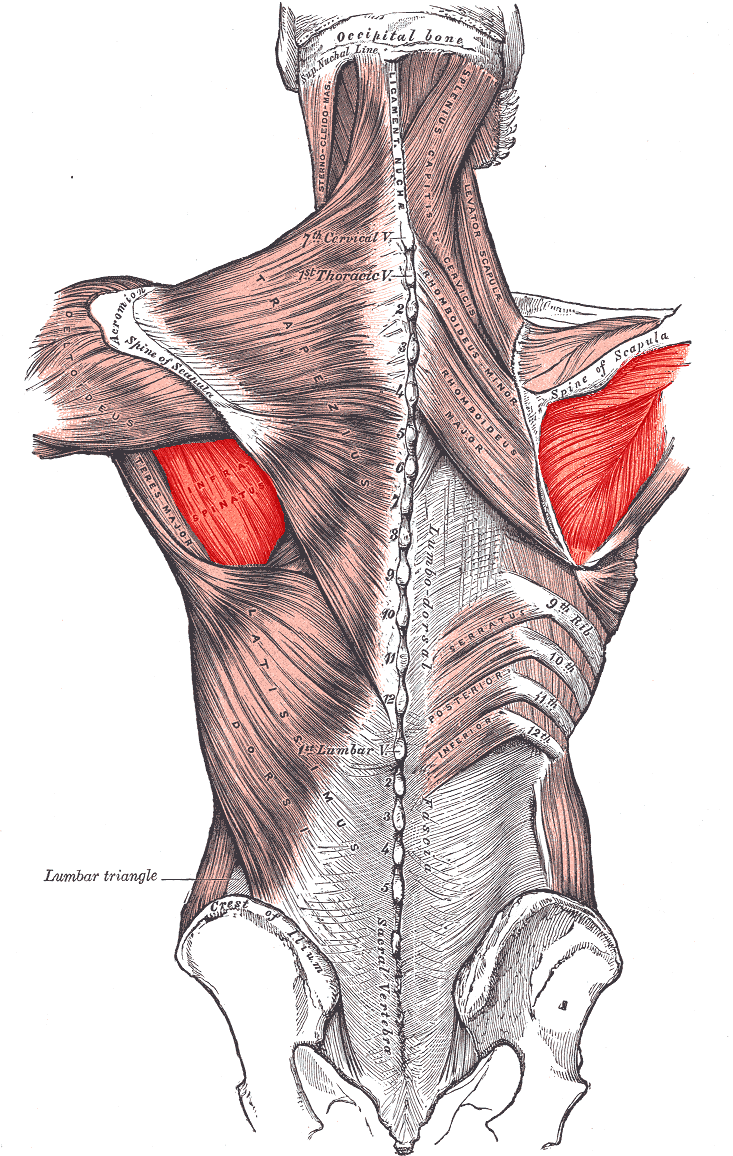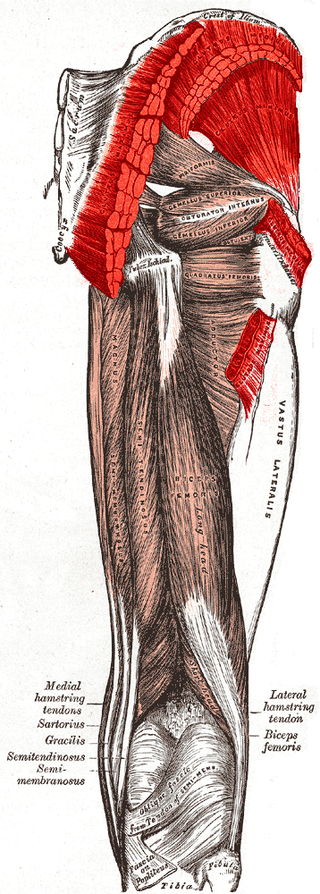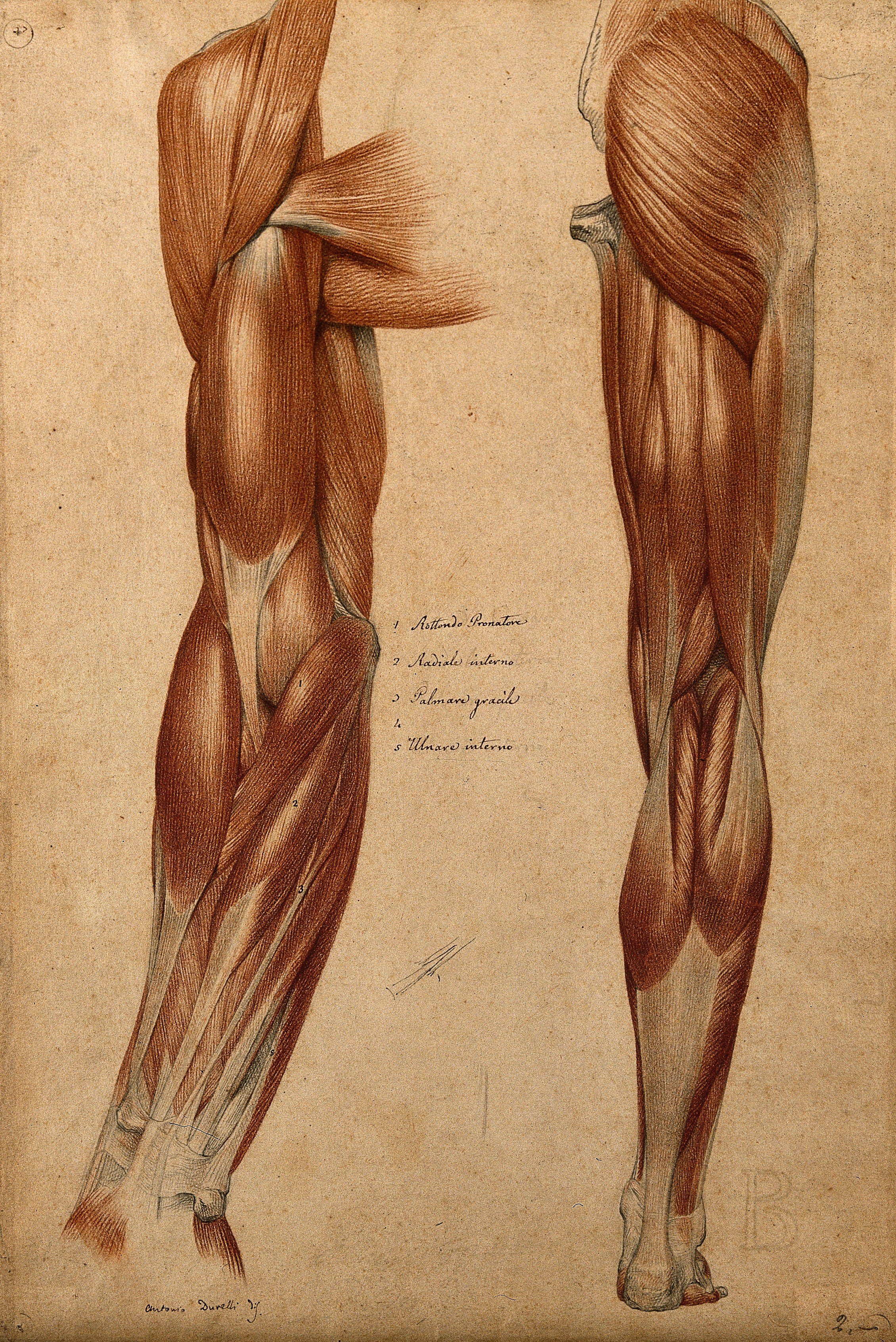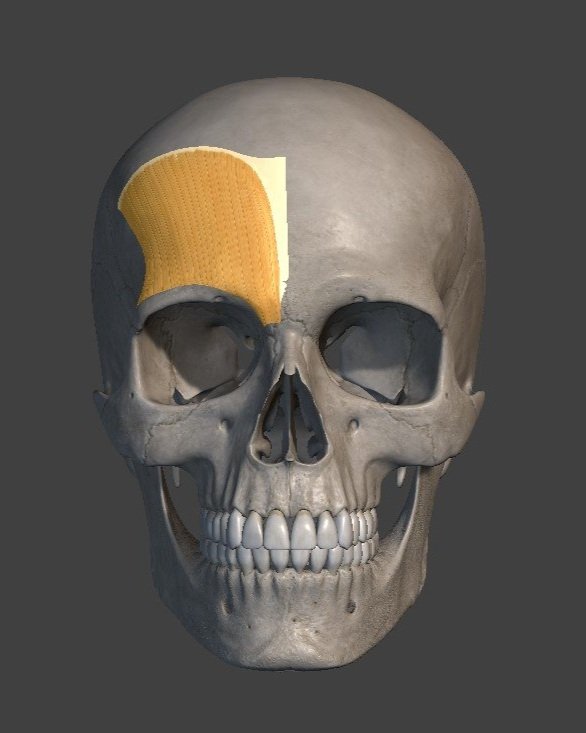Anatomy in Motion #2: Rules of Muscles
We've seen how joints can move and the range of motion they offer, but before we jump straight into analyzing movement in the body, we need to take another stop (or two, or three…) to finish putting all the pieces of the puzzle together. Today, we will be covering the basic anatomy of muscles with a few key concepts.
/!\ DISCLAIMER: Just so we are clear, this is not a medical lecture. Do not draw rushed conclusions or diagnose yourself or others. If you have health issues consult your doctor.
Skeletal muscles are the muscle type that makes us move, so called because they attach to bones and are able to manipulate the joints. (compared to muscles that operate the heart and other organs, which might be of less interest for studying motion).
Muscles don't connect directly to the bone, but they do so through tendons. These tendons are made of a very dense, tough collagen material, but they also retain elastic properties. Tendons do more than just be a bridge between muscles and bone. They often work to store potential energy while stretching, much like the effects of springs (you can check an example here in the quadruped's gate).
From : https://www.animatornotebook.com/learn/quadrupeds-gaits
The muscle itself is the engine of movement, composed of a big bundle of muscle fibers. The greater the number of muscle fibers the bigger the muscle is, and the bigger the muscle the stronger it usually is.
https://commons.wikimedia.org/wiki/File:Tendon_anatomy_-_Tendon_Epimysium_Fascicle_Fiber_Fibril_etc_--_Smart-Servier_%28cropped%29.jpg
Muscles can look complicated, and while to a certain degree, they are, when we isolate one single fiber and ask ourselves what a muscle actually does, the answer is rather straightforward.
Muscles only really do one thing: when the nerve impulse arrives at the muscle fiber, they use their stored energy to contract (or shorten) in the direction of said fiber. That's about it.
What makes muscles complicated to understand is how, when they contract, they manipulate the joints, how they combine with each other to create complex movement (every movement is very often a combination of different muscles contracting with different timing), how they react with other muscles and to the environment, and how muscles evolve over time based on how they are used. On top of that, we have to especially consider the complex network of muscles of the body. Because, as you can see, it can get quite messy.
https://en.wikipedia.org/wiki/Infraspinatus_muscle#/media/File:Infraspinatus.PNG
https://en.wikipedia.org/wiki/Gluteal_muscles#/media/File:Gluteus_muscles.PNG
https://upload.wikimedia.org/wikipedia/commons/4/4f/Muscles_and_tendons_of_the_arm_and_leg%3B_two_%C3%A9corch%C3%A9_figures._Wellcome_V0008256.jpg
Rules of Muscles
Let's now talk about the things a muscle can and cannot do to clear up some possible confusion and learn some fun facts about your body. Some of these might be a bit obvious, some not. I'll use mostly the muscle of the bicep to illustrate examples because I think it's one of the few muscles that everyone knows where it is and what it does, and the elbow is a simpler joint to understand.
As a reminder, this is what the elbow joint and the bicep look like. When the bicep contracts it flexes (bends) the elbow joint. The tricep, positioned in the back of the arm, extends the elbow.
- I said a muscle can only contract and relax (which is basically not contracting). This means that it cannot actively extend! For every action the body does it has a complementary muscle to do the exact opposite. In the elbow, the bicep is the one to flex the elbow joint, but we can only extend it in one of two ways; either by using the force of gravity or by contracting the tricep which sits opposite to the bicep.
- A muscle better works in the direction of its muscle fibers, and only acts on the joint it crosses. If you look closely at the fibers of any muscle, they will probably tell you in which direction they’ll contract. A muscle does not pull on bones that it is not connected to. This sounds obvious but in the messy network of muscles, it can be easy to lose track of their attachments to bones.
- When a muscle contracts, it will pull two bones closer together. The consequence of that is bending (flexing) the joint between the two bones. If we go back to the bicep, the two bones will be the arm and the forearm, the joint flexed is the elbow. So muscles don't directly manipulate joints, they pull on bones which then move joints.
- When a muscle contracts, it doesn't give preferential treatment to one side of it, it pulls simultaneously on both sides, and the side that is least resistant is gonna be the one that moves. So if I say that the biceps pull the forearm towards the shoulder, this is technically wrong. In the case of the bicep, the shoulder and chest are also being pulled towards the forearm, but this last one, being the freer and less resistant to being moved, is going to be the one that moves the most.
- A muscle's range of motion always acts in the spectrum of what the joint allows (check Intro to Bones). Understandably, we don't find muscles where movements of the joint are impossible (for example, there are no muscles that rotate the fingers along their axis or bend the elbow sideways).
- Muscle fibers can't only contract at part of their force. If the stimulus to contract arrives, they always fully contract every time with maximum force. This then begs the question, how can we choose the amount of force used to lift a feather gently? Especially compared to that same muscle lifting a heavy dumbbell? The key word, in this case, is "muscle fibers". While the single fibers always contract with full force, it is the number of muscle fibers we engage in the specific muscle that makes the difference in force production.
- The number of muscle fibers is what mostly determines how strong and powerful a muscle is. So the bigger the muscle, the more powerful it tends to be. Some muscles in the body are naturally bigger than others. For example, the muscles of the legs like the quadriceps and glutes are much bigger than the ones of the neck, they carry very different weights and have different functions, after all.
- Muscles have a specific range of motion they feel more comfortable acting in. As such, they naturally resist overextension and restrain motion in the opposite direction of their contraction (you've felt this resistance if you tried stretching a muscle). By resisting overextension, antagonistic muscles often act together to hold the body upright without much active effort when we are standing.
That is all for my little list for now.
As an example of how muscles function in the real world, here is a little sneak peek of the muscles in action:
From: https://www.animatornotebook.com/learn/bird-flight
You can see from the bird's muscle anatomy the two muscles that are mainly responsible for flapping the wings: the big pectoralis muscle and the supracoracoideus muscle. These two muscles function as antagonists during the wing-flapping cycle. The pectoralis is a big and thick muscle (imagine chicken breasts) that needs to be so strong as to basically fight gravity. When this muscle contracts it pulls the humerus towards the sternum, mobilizing the joint of the shoulder (our pectoralis works in basically the same way, even though it’s a lot smaller in comparison).
The supracoracoideus muscle is a bit more nuanced. Working as the main antagonist of the pectoralis, its attachment is on the back side of the humerus, wrapping all the way around the back of the shoulder/scapula, and while this muscle is still pretty big and strong, it's not quite as powerful as the pectoralis, nor it needs to be. When this muscle contracts, it raises the humerus, rotating it at the shoulder joint, and pulling the wing up. If we look closely at the attachment of the muscle on the humerus we can spot one more detail, the muscle is connected to the bone towards the front side of it. This means that when this muscle contracts, it not only raises the wing but also turns it backward. If you know the pattern of how birds flap their wings, this will make a lot of sense. (you can learn more about it here). You can start to see, with this example, how, even if the action of the muscles can be quite simple, understanding what a muscle exactly does is not always obvious if we don't look closely.
With all of this information, if you know where a muscle attaches and you know its shape, you should be able to figure out what joint it manipulates and how.
Here is something for you to practice with:
Solution: Lumbar spine flexion (as in crunches), supports abdominal viscera, stabilizes the pelvis.
Solution: Main action is the abduction of the arm (aka raising the arm)
Solution: Plantar flexion (raising the heel), Flexion of the leg (bending the knee)
What does this mean for your animation?
We often try to create a sense of realism and a feeling of organicness in our animation. That could start with understanding what a real body can and cannot do. To what degree can we move different body parts, if we can move them at all. Muscles offer a second degree of limitation of movement that depends on how flexible a muscle is. Contrary to the degree of motion of joints, muscles’ flexibility changes a lot from individual to individual and can be transformed over time. Knowing what muscles do can lay the groundwork for understanding movement. For example how birds flap their wings or why we walk the way we do. Our body is always trying to find the most efficient way to move. So if we are trying to lift a weight, the muscles we will use depend on how heavy the object is. We can lift a light object just by flexing our wrist or using our fingers, but we’ll have to engage the bicep for something heavier like a bottle of water, and we’ll have to engage our leg muscle if it is really heavy like a table. The different choices of muscle will change drastically what the action looks like!
Understanding the direction of muscle fibers can give you more nuances on how things move. For example, the frontalis muscle is the one responsible for raising the eyebrows, and if you look at the direction of the muscle fibers you can see that when it activates it will pull the skin not only up but outward. The inner part of the eyebrow will also move more than the outer part.



















In the previous posts, we've covered the joint's range of motion and how muscles pull on them to create movement. Today, we'll dive a little bit deeper and see how both the shape of bones and muscle attachment to them interact to create a lever-like system.